Sprint - Nextel 2015 Annual Report Download - page 97
Download and view the complete annual report
Please find page 97 of the 2015 Sprint - Nextel annual report below. You can navigate through the pages in the report by either clicking on the pages listed below, or by using the keyword search tool below to find specific information within the annual report.-
 1
1 -
 2
2 -
 3
3 -
 4
4 -
 5
5 -
 6
6 -
 7
7 -
 8
8 -
 9
9 -
 10
10 -
 11
11 -
 12
12 -
 13
13 -
 14
14 -
 15
15 -
 16
16 -
 17
17 -
 18
18 -
 19
19 -
 20
20 -
 21
21 -
 22
22 -
 23
23 -
 24
24 -
 25
25 -
 26
26 -
 27
27 -
 28
28 -
 29
29 -
 30
30 -
 31
31 -
 32
32 -
 33
33 -
 34
34 -
 35
35 -
 36
36 -
 37
37 -
 38
38 -
 39
39 -
 40
40 -
 41
41 -
 42
42 -
 43
43 -
 44
44 -
 45
45 -
 46
46 -
 47
47 -
 48
48 -
 49
49 -
 50
50 -
 51
51 -
 52
52 -
 53
53 -
 54
54 -
 55
55 -
 56
56 -
 57
57 -
 58
58 -
 59
59 -
 60
60 -
 61
61 -
 62
62 -
 63
63 -
 64
64 -
 65
65 -
 66
66 -
 67
67 -
 68
68 -
 69
69 -
 70
70 -
 71
71 -
 72
72 -
 73
73 -
 74
74 -
 75
75 -
 76
76 -
 77
77 -
 78
78 -
 79
79 -
 80
80 -
 81
81 -
 82
82 -
 83
83 -
 84
84 -
 85
85 -
 86
86 -
 87
87 -
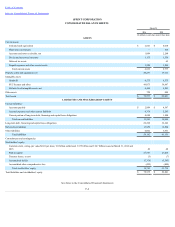 88
88 -
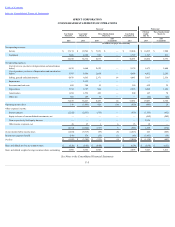 89
89 -
 90
90 -
 91
91 -
 92
92 -
 93
93 -
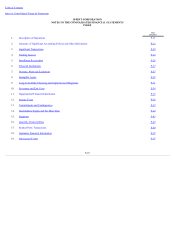 94
94 -
 95
95 -
 96
96 -
 97
97 -
 98
98 -
 99
99 -
 100
100 -
 101
101 -
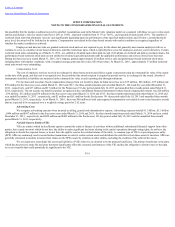 102
102 -
 103
103 -
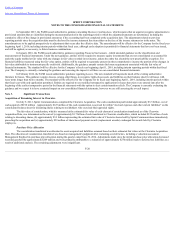 104
104 -
 105
105 -
 106
106 -
 107
107 -
 108
108 -
 109
109 -
 110
110 -
 111
111 -
 112
112 -
 113
113 -
 114
114 -
 115
115 -
 116
116 -
 117
117 -
 118
118 -
 119
119 -
 120
120 -
 121
121 -
 122
122 -
 123
123 -
 124
124 -
 125
125 -
 126
126 -
 127
127 -
 128
128 -
 129
129 -
 130
130 -
 131
131 -
 132
132 -
 133
133 -
 134
134 -
 135
135 -
 136
136 -
 137
137 -
 138
138 -
 139
139 -
 140
140 -
 141
141 -
 142
142 -
 143
143 -
 144
144 -
 145
145 -
 146
146 -
 147
147 -
 148
148 -
 149
149 -
 150
150 -
 151
151 -
 152
152 -
 153
153 -
 154
154 -
 155
155 -
 156
156 -
 157
157 -
 158
158 -
 159
159 -
 160
160 -
 161
161 -
 162
162 -
 163
163 -
 164
164 -
 165
165 -
 166
166 -
 167
167 -
 168
168 -
 169
169 -
 170
170 -
 171
171 -
 172
172 -
 173
173 -
 174
174 -
 175
175 -
 176
176 -
 177
177 -
 178
178 -
 179
179 -
 180
180 -
 181
181 -
 182
182 -
 183
183 -
 184
184 -
 185
185 -
 186
186 -
 187
187 -
 188
188 -
 189
189 -
 190
190 -
 191
191 -
 192
192 -
 193
193 -
 194
194 -
 195
195 -
 196
196 -
 197
197 -
 198
198 -
 199
199 -
 200
200 -
 201
201 -
 202
202 -
 203
203 -
 204
204 -
 205
205 -
 206
206 -
 207
207 -
 208
208 -
 209
209 -
 210
210 -
 211
211 -
 212
212 -
 213
213 -
 214
214 -
 215
215 -
 216
216 -
 217
217 -
 218
218 -
 219
219 -
 220
220 -
 221
221 -
 222
222 -
 223
223 -
 224
224 -
 225
225 -
 226
226 -
 227
227 -
 228
228 -
 229
229 -
 230
230 -
 231
231 -
 232
232 -
 233
233 -
 234
234 -
 235
235 -
 236
236 -
 237
237 -
 238
238 -
 239
239 -
 240
240 -
 241
241 -
 242
242 -
 243
243 -
 244
244 -
 245
245 -
 246
246 -
 247
247 -
 248
248 -
 249
249 -
 250
250 -
 251
251 -
 252
252 -
 253
253 -
 254
254 -
 255
255 -
 256
256 -
 257
257 -
 258
258 -
 259
259 -
 260
260 -
 261
261 -
 262
262 -
 263
263 -
 264
264 -
 265
265 -
 266
266 -
 267
267 -
 268
268 -
 269
269 -
 270
270 -
 271
271 -
 272
272 -
 273
273 -
 274
274 -
 275
275 -
 276
276 -
 277
277 -
 278
278 -
 279
279 -
 280
280 -
 281
281 -
 282
282 -
 283
283 -
 284
284 -
 285
285 -
 286
286 -
 287
287 -
 288
288 -
 289
289 -
 290
290 -
 291
291 -
 292
292 -
 293
293 -
 294
294 -
 295
295 -
 296
296 -
 297
297 -
 298
298 -
 299
299 -
 300
300 -
 301
301 -
 302
302 -
 303
303 -
 304
304 -
 305
305 -
 306
306 -
 307
307 -
 308
308 -
 309
309 -
 310
310 -
 311
311 -
 312
312 -
 313
313 -
 314
314 -
 315
315 -
 316
316 -
 317
317 -
 318
318 -
 319
319 -
 320
320 -
 321
321 -
 322
322 -
 323
323 -
 324
324 -
 325
325 -
 326
326 -
 327
327 -
 328
328 -
 329
329 -
 330
330 -
 331
331 -
 332
332 -
 333
333 -
 334
334 -
 335
335 -
 336
336 -
 337
337 -
 338
338 -
 339
339 -
 340
340 -
 341
341 -
 342
342 -
 343
343 -
 344
344 -
 345
345 -
 346
346 -
 347
347 -
 348
348 -
 349
349 -
 350
350 -
 351
351 -
 352
352 -
 353
353 -
 354
354 -
 355
355 -
 356
356 -
 357
357 -
 358
358 -
 359
359 -
 360
360 -
 361
361 -
 362
362 -
 363
363 -
 364
364 -
 365
365 -
 366
366 -
 367
367 -
 368
368 -
 369
369 -
 370
370 -
 371
371 -
 372
372 -
 373
373 -
 374
374 -
 375
375 -
 376
376 -
 377
377 -
 378
378 -
 379
379 -
 380
380 -
 381
381 -
 382
382 -
 383
383 -
 384
384 -
 385
385 -
 386
386 -
 387
387 -
 388
388 -
 389
389 -
 390
390 -
 391
391 -
 392
392 -
 393
393 -
 394
394 -
 395
395 -
 396
396 -
 397
397 -
 398
398 -
 399
399 -
 400
400 -
 401
401 -
 402
402 -
 403
403 -
 404
404 -
 405
405 -
 406
406
 |
 |

Table of Contents
Index to Consolidated Financial Statements
SPRINT CORPORATION
NOTES TO THE CONSOLIDATED FINANCIAL STATEMENTS
government-sponsored debt securities, corporate debt securities, municipal securities, bank-related securities, and credit and debit card transactions in process. The
carrying amounts approximate fair value.
Installment Receivables
Beginning in October 2015, Sprint sold and derecognized all installment receivables as well as the related allowances and deferred interest. Prior to
initiating sales of installment receivables, the carrying value of installment receivables approximated fair value because the receivables were recorded at their
present value, net of the deferred interest and allowance for credit losses. At the time of the installment sale, we imputed the interest on the installment receivable
and recorded it as a reduction to revenue and as a reduction to the face amount of the related receivable. Interest income was recognized over the term of the
installment contract in service revenue.
We categorized our installment receivables as prime and subprime based upon subscriber credit profiles and as unbilled, billed-current and billed-past
due based upon the age of the receivable. We used proprietary scoring systems that measure the credit quality of our receivables using several factors, such as
credit bureau information, subscriber credit risk scores and service plan characteristics. Payment history was subsequently monitored to further evaluate credit
profiles. Prime subscriber receivables were those with lower delinquency risk and subprime subscriber receivables were those with higher delinquency risk.
Subscribers within the subprime category may have been required to make a down payment on their device and accessory purchases. Installment receivables for
which invoices were not yet generated for the customer were considered unbilled. Installment receivables for which invoices were generated but which were not
past the contractual due date were considered billed - current. Installment receivables for which invoices were generated and the payment was approximately ten
days past the contractual due date were considered billed - past due. Account balances were written-off if collection efforts were unsuccessful and future collection
was unlikely based on the length of time from the day accounts become past due.
Allowance for Doubtful Accounts
An allowance for doubtful accounts is established to cover probable and reasonably estimable losses. Because of the number of subscriber accounts, it
is not practical to review the collectability of each of those accounts individually to determine the amount of allowance for doubtful accounts each period, although
some account level analysis is performed with respect to large wireless and wireline subscribers. The estimate of allowance for doubtful accounts considers a
number of factors, including collection experience, aging of the remaining accounts receivable portfolios, credit quality of the subscriber base and other qualitative
considerations, including macro-economic factors. Account balances are written-off if collection efforts are unsuccessful and future collection is unlikely based on
the length of time from the day accounts become past due. Amounts written off against the allowance for doubtful accounts, net of recoveries and other
adjustments, were $612 million , $752 million , $106 million and $98 million for the Successor years ended March 31, 2016 and 2015 , the three-month transition
period ended March 31, 2014 and year ended December 31, 2013 , and $374 million and $105 million for the Predecessor 191-day period ended July 10, 2013 and
the unaudited three-month period ended March 31, 2013, respectively. See Note5.InstallmentReceivablesfor additional information as it relates to the allowance
for doubtful accounts specifically attributable to installment receivables.
Device and Accessory Inventory
Inventories are stated at the lower of cost or market. Cost is determined by the first-in, first-out (FIFO) method. The Company sells wireless devices
separately or in conjunction with a service contract. When the device is sold below cost, the cost and related revenues generated from the device sales are
recognized at the time of sale. The cost and related revenues from device sales are not recognized prior to the time of sale because the promotional discount
decision is generally made at the point of sale and because the cost of the device on sales under our subsidy program is expected to be recovered through service
revenues.
The net realizable value of devices and other inventory is analyzed on a regular basis. This analysis includes assessing obsolescence, sales forecasts,
product life cycle, marketplace and other considerations. If assessments regarding the above factors adversely change, we may sell devices at a higher prices or
record a write-down to inventory for obsolete or slow-moving items prior to the point of sale.
F-13
